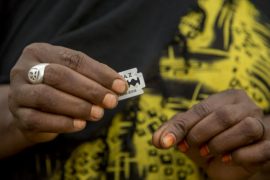It is a good thing that in recent years, a lot of woman are not only making adequate impact in the workspace, but are also assuming top management positions. For the heavy clamour for gender equality, this is good news. However, some downsides exist which may be worse than not having women in the workspace at all. This has to do with what is known as the “SECOND GENERATION GENDER BIAS”.
Many CEOs who make gender diversity a priority—by setting aspirational goals for the proportion of women in leadership roles, insisting on diverse slates of candidates for senior positions, and developing mentoring and training programs—are frustrated. They and their companies spend time, money, and good intentions on efforts to build a more robust pipeline of upwardly mobile women, and then not much happens.
The problem with these leaders’ approaches is that they don’t address the often fragile process of coming to see oneself, and to be seen by others, as a leader. Becoming a leader involves much more than being put in a leadership role, acquiring new skills, and adapting one’s style to the requirements of that role. It involves a fundamental identity shift. Organizations inadvertently undermine this process when they advise women to proactively seek leadership roles without also addressing policies and practices that communicate a mismatch between how women are seen and the qualities and experiences people tend to associate with leaders.
A significant body of research shows that for women, the subtle gender bias that persists in organizations and in society disrupts the learning cycle at the heart of becoming a leader. This research also points to some steps that companies can take in order to rectify the situation. It’s not enough to identify and instill the “right” skills and competencies as if in a social vacuum. The context must support a woman’s motivation to lead and also increase the likelihood that others will recognize and encourage her efforts—even when she doesn’t look or behave like the current generation of senior executives.
The solutions to the pipeline problem are very different from what companies currently employ. Traditional high-potential, mentoring, and leadership education programs are necessary but not sufficient. Our research, teaching, and consulting reveal three additional actions companies can take to improve the chances that women will gain a sense of themselves as leaders, be recognized as such, and ultimately succeed.
People become leaders by internalizing a leadership identity and developing a sense of purpose. Internalizing a sense of oneself as a leader is an iterative process. A person asserts leadership by taking purposeful action—such as convening a meeting to revive a dormant project. Others affirm or resist the action, thus encouraging or discouraging subsequent assertions. These interactions inform the person’s sense of self as a leader and communicate how others view his or her fitness for the role.

As a person’s leadership capabilities grow and opportunities to demonstrate them expand, high-profile, challenging assignments and other organizational endorsements become more likely. Such affirmation gives the person the fortitude to step outside a comfort zone and experiment with unfamiliar behaviors and new ways of exercising leadership. An absence of affirmation, however, diminishes self-confidence and discourages him or her from seeking developmental opportunities or experimenting. Leadership identity, which begins as a tentative, peripheral aspect of the self, eventually withers away, along with opportunities to grow through new assignments and real achievements. Over time, an aspiring leader acquires a reputation as having—or not having—high potential.
Effective leaders develop a sense of purpose by pursuing goals that align with their personal values and advance the collective good. This allows them to look beyond the status quo to what is possible and gives them a compelling reason to take action despite personal fears and insecurities. Such leaders are seen as authentic and trustworthy because they are willing to take risks in the service of shared goals. By connecting others to a larger purpose, they inspire commitment, boost resolve, and help colleagues find deeper meaning in their work.
Integrating leadership into one’s core identity is particularly challenging for women, who must establish credibility in a culture that is deeply conflicted about whether, when, and how they should exercise authority. Practices that equate leadership with behaviors considered more common in men suggest that women are simply not cut out to be leaders. Furthermore, the human tendency to gravitate to people like oneself leads powerful men to sponsor and advocate for other men when leadership opportunities arise. As Amanda’s story illustrates, women’s leadership potential sometimes shows in less conventional ways—being responsive to clients’ needs, for example, rather than boldly asserting a point of view—and sometimes it takes powerful women to recognize that potential. But powerful women are scarce.
Despite a lack of discriminatory intent, subtle, “second-generation” forms of workplace gender bias can obstruct the leadership identity development of a company’s entire population of women. The resulting underrepresentation of women in top positions reinforces entrenched beliefs, prompts and supports men’s bids for leadership, and thus maintains the status quo.
What Is Second-Generation Gender Bias?
Research has moved away from a focus on the deliberate exclusion of women and toward investigating “second-generation” forms of gender bias as the primary cause of women’s persistent underrepresentation in leadership roles. This bias erects powerful but subtle and often invisible barriers for women that arise from cultural assumptions and organizational structures, practices, and patterns of interaction that inadvertently benefit men while putting women at a disadvantage. Among them are:
- A paucity of role models for women.
Aspiring leaders need role models whose styles and behaviors they can experiment with and evaluate according to their own standards and others’ reactions. Fewer female leaders means fewer role models and can suggest to young would-be leaders that being a woman is a liability—thus discouraging them from viewing senior women as credible sources of advice and support.
- Gendered career paths and gendered work.
Many entrenched organizational structures and work practices were designed to fit men’s lives and situations at a time when women made up only a very small portion of the workforce. For one example, formal rotations in sales or operations have traditionally been a key step on the path to senior leadership, and men are more likely than women to have held such jobs. Yet requirements like these may be outdated when it comes to the kinds of experience that best prepare a person to lead. For another, career- enhancing international posts often assume a “trailing spouse” who has no career and can easily move—a family situation much more common for men than for women. How work is valued may similarly give men an advantage: Research indicates that organizations tend to ignore or undervalue behind-the-scenes work (building a team, avoiding a crisis), which women are more likely to do, while rewarding heroic work, which is most often done by men. These practices were not designed to be discriminatory, but their cumulative effect disadvantages women. A vicious cycle ensues: Men appear to be best suited to leadership roles, and this perception propels more of them to seek and attain such positions, thus reinforcing the notion that they are simply better leaders.
- Women’s lack of access to networks and sponsors.
Informal networks are a precious resource for would-be leaders, yet differences in men’s and women’s organizational roles and career prospects, along with their proclivity to interact with others of the same gender, result in weaker networks for women. They cite as a major barrier to advancement their lack of access to influential colleagues. Moreover, the connections women do have tend to be less efficacious: Men’s networks provide more informal help than women’s do, and men are more likely to have mentors who help them get promoted. Meanwhile, men in positions of power tend to direct developmental opportunities to junior men, whom they view as more likely than women to succeed.
- Double binds.
In most cultures masculinity and leadership are closely linked: The ideal leader, like the ideal man, is decisive, assertive, and independent. In contrast, women are expected to be nice, caretaking, and unselfish. The mismatch between conventionally feminine qualities and the qualities thought necessary for leadership puts female leaders in a double bind. Numerous studies have shown that women who excel in traditionally male domains are viewed as competent but less likable than their male counterparts. Behaviors that suggest self-confidence or assertiveness in men often appear arrogant or abrasive in women. Meanwhile, women in positions of authority who enact a conventionally feminine style may be liked but are not respected. They are deemed too emotional to make tough decisions and too soft to be strong leaders.
The three actions we suggest to support women’s access to leadership positions are (1) educate women and men about second-generation gender bias, (2) create safe “identity workspaces” to support transitions to bigger roles, and (3) anchor women’s development efforts in a sense of leadership purpose rather than in how women are perceived. These actions will give women insight into themselves and their organizations, enabling them to more effectively chart a course to leadership.
Source: Harvard Business Review/ By: Herminia Ibarra, Robin J. Ely, Deborah M. Kolb




